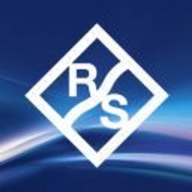

Find out in this report how the two Oscilloscopes solutions compare in terms of features, pricing, service and support, easy of deployment, and ROI.
| Product | Market Share (%) |
|---|---|
| Rohde & Schwarz Oscilloscopes | 8.4% |
| National Instruments (NI) Oscilloscopes | 1.3% |
| Other | 90.3% |
| Company Size | Count |
|---|---|
| Small Business | 3 |
| Large Enterprise | 7 |
| Company Size | Count |
|---|---|
| Small Business | 4 |
| Midsize Enterprise | 1 |
| Large Enterprise | 6 |
Turning powerful possibilities into real solutions with our open, software-defined platform for automated test and automated measurement systems.
Oscilloscope innovation that delivers measurement confidence. Excellent signal fidelity, high acquisition rate, an innovative trigger system and a clever user interface - that’s what you get with Rohde & Schwarz, a leading manufacturer of oscilloscopes. Match your needs with the right oscilloscope platform, probing options and software applications. From general purpose test to solutions for specific industry standards, we have you covered.
We monitor all Oscilloscopes reviews to prevent fraudulent reviews and keep review quality high. We do not post reviews by company employees or direct competitors. We validate each review for authenticity via cross-reference with LinkedIn, and personal follow-up with the reviewer when necessary.